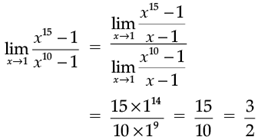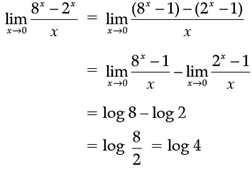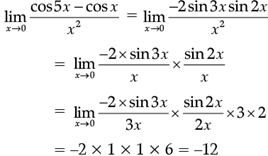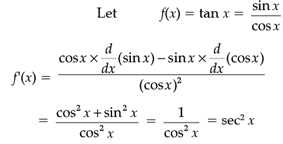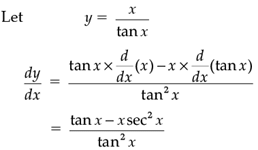Test: Limits and Derivatives (Limits)- Case Based Type Questions - Commerce MCQ
10 Questions MCQ Test Mathematics (Maths) Class 11 - Test: Limits and Derivatives (Limits)- Case Based Type Questions
Indeterminate forms of limits
On direct evaluation, if a limit takes the form 0/0, ∞/∞, 0 × ∞ ..., we use standard results for evaluating the limits. The below figure shows a few indeterminate forms.
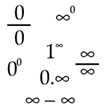
Q. 

Indeterminate forms of limits
On direct evaluation, if a limit takes the form 0/0, ∞/∞, 0 × ∞ ..., we use standard results for evaluating the limits. The below figure shows a few indeterminate forms.

Q. 


| 1 Crore+ students have signed up on EduRev. Have you? Download the App |
Indeterminate forms of limits
On direct evaluation, if a limit takes the form 0/0, ∞/∞, 0 × ∞ ..., we use standard results for evaluating the limits. The below figure shows a few indeterminate forms.

Q. 

Indeterminate forms of limits
On direct evaluation, if a limit takes the form 0/0, ∞/∞, 0 × ∞ ..., we use standard results for evaluating the limits. The below figure shows a few indeterminate forms.
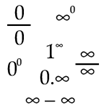
Q. ![]()
Indeterminate forms of limits
On direct evaluation, if a limit takes the form 0/0, ∞/∞, 0 × ∞ ..., we use standard results for evaluating the limits. The below figure shows a few indeterminate forms.
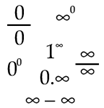
Q. ![]()
The derivative of y with respect to x is the change in y with respect to a change in x.
The derivative of f(x) at x0 is given by

Q. Derivative of sin x with respect to x is ..........
The derivative of y with respect to x is the change in y with respect to a change in x.
The derivative of f(x) at x0 is given by

The derivative of y with respect to x is the change in y with respect to a change in x.
The derivative of f(x) at x0 is given by

Q. Derivative of cos x with respect to x is ...............
The derivative of y with respect to x is the change in y with respect to a change in x.
The derivative of f(x) at x0 is given by

Q. If f(x) = x100 – x80, f '(1) is ...........
The derivative of y with respect to x is the change in y with respect to a change in x.
The derivative of f(x) at x0 is given by

Q. ![]()
|
75 videos|238 docs|91 tests
|
|
75 videos|238 docs|91 tests
|




